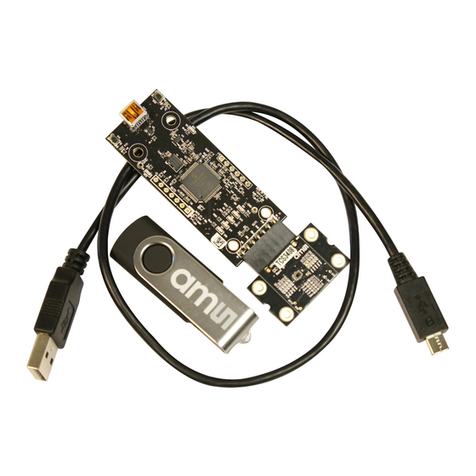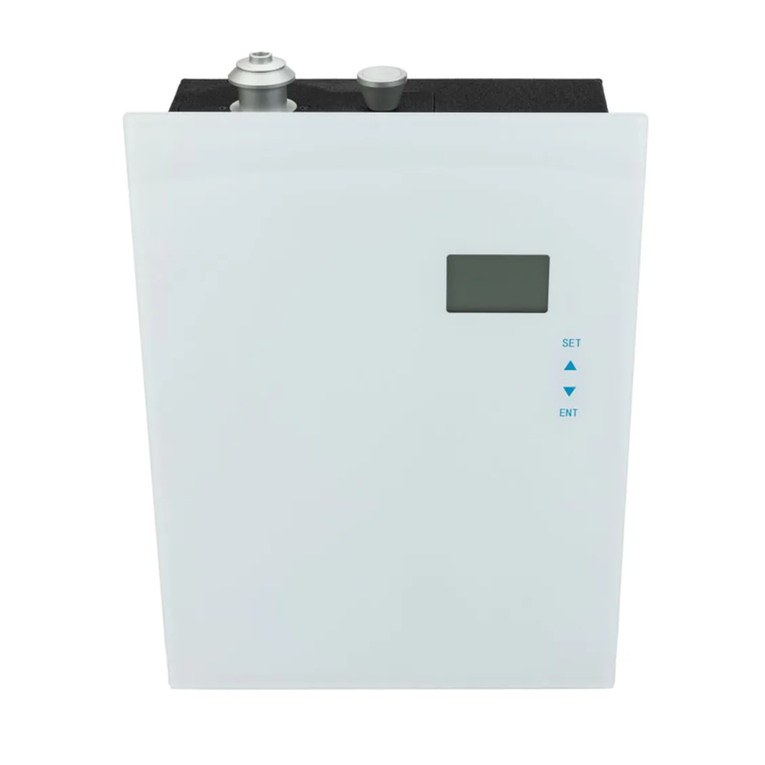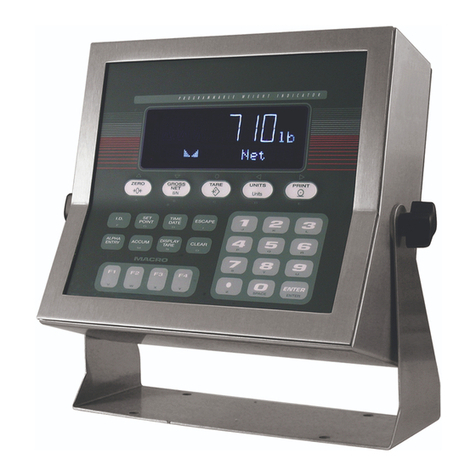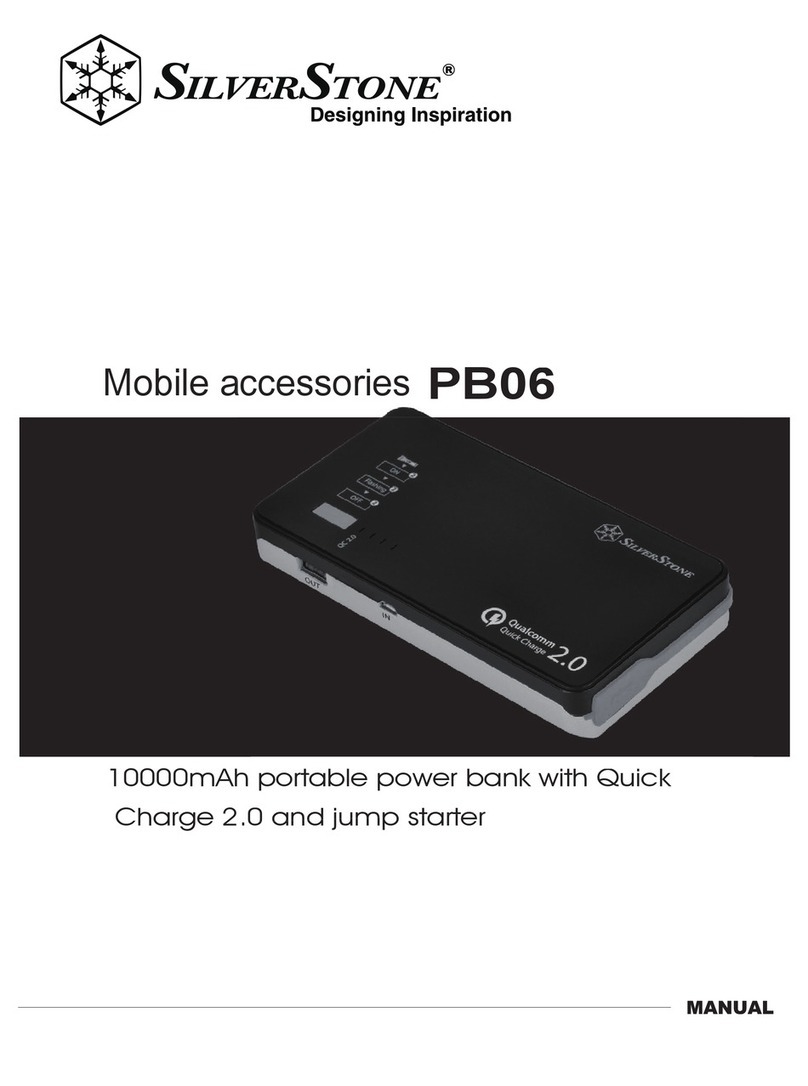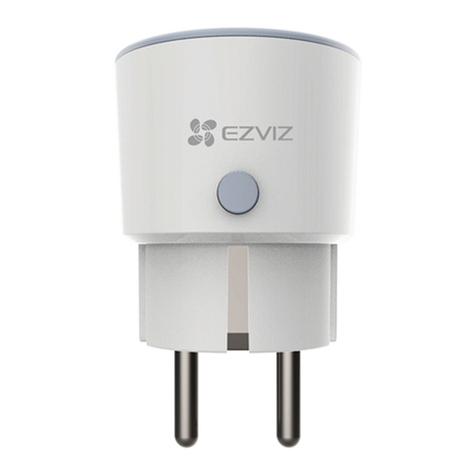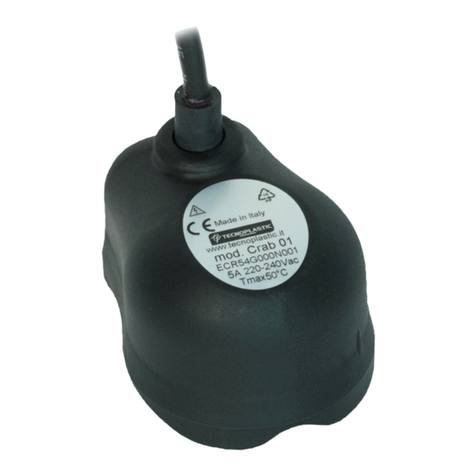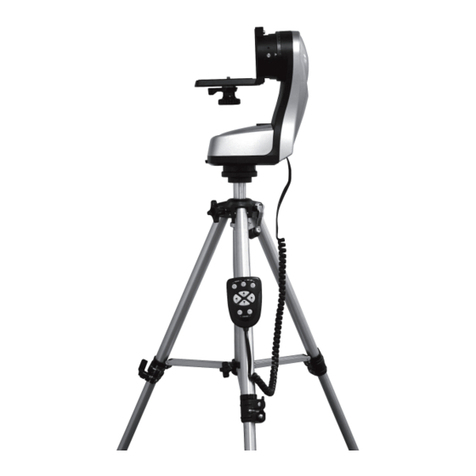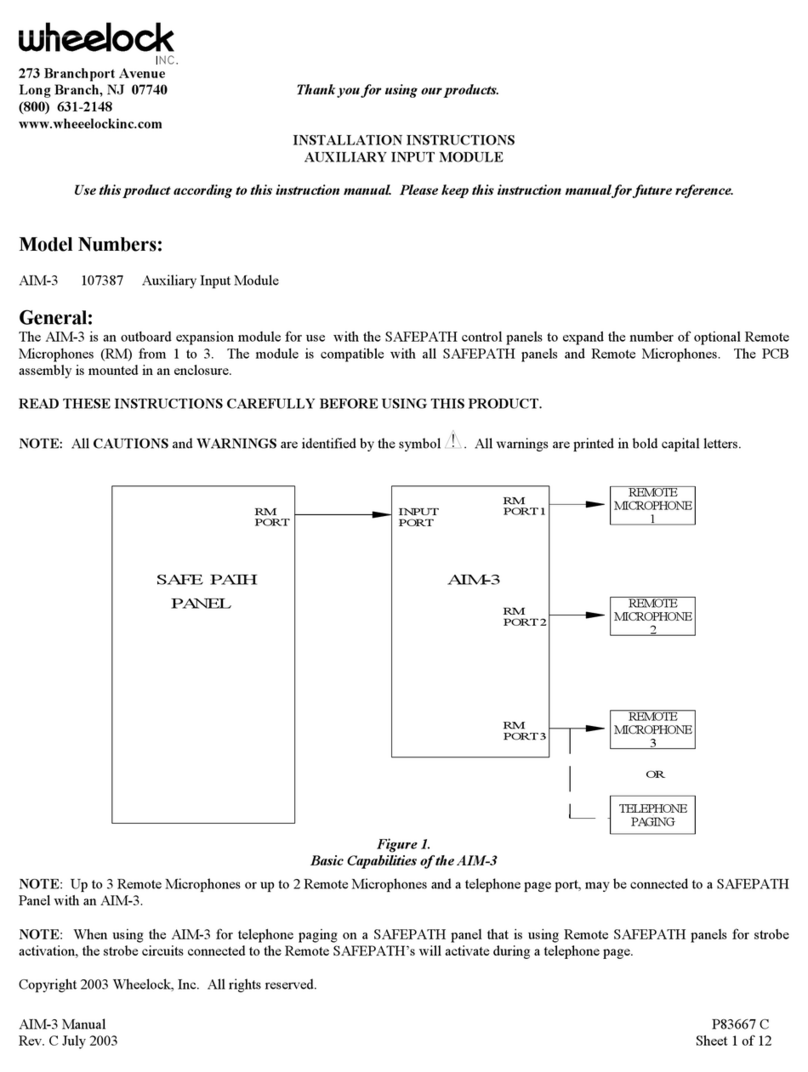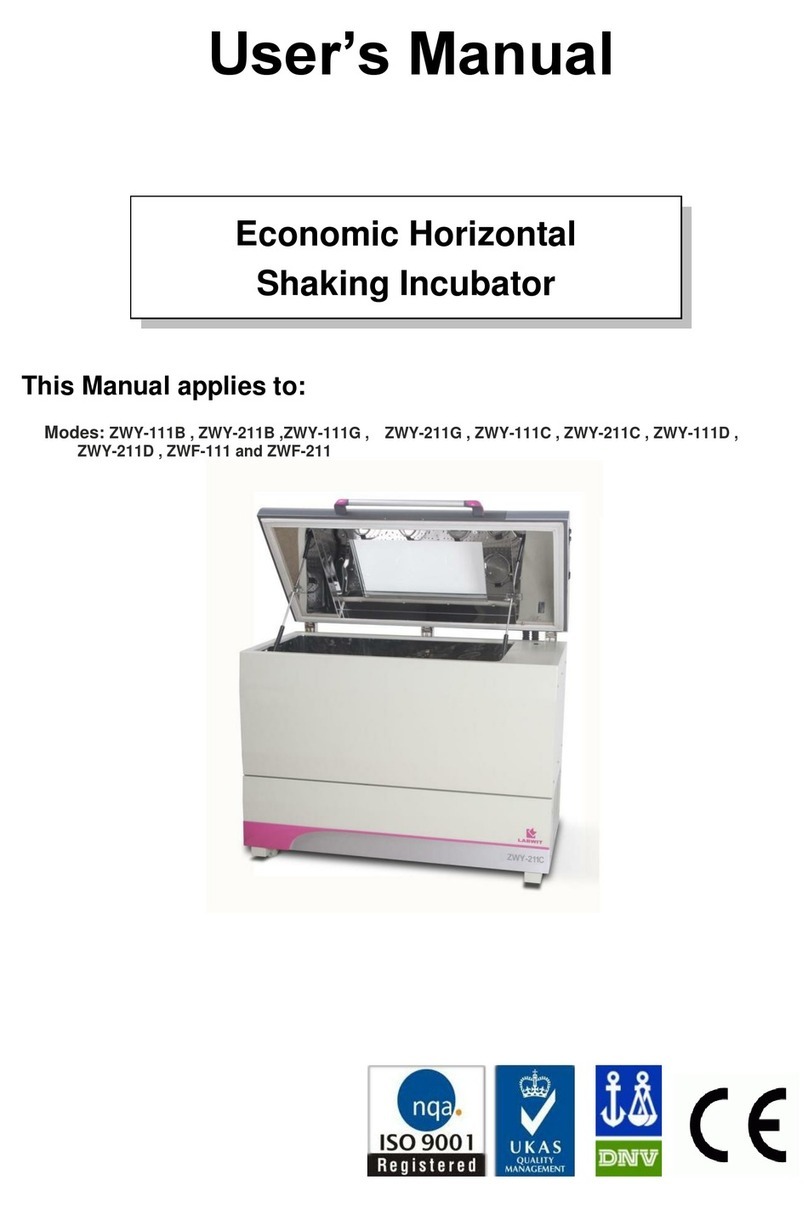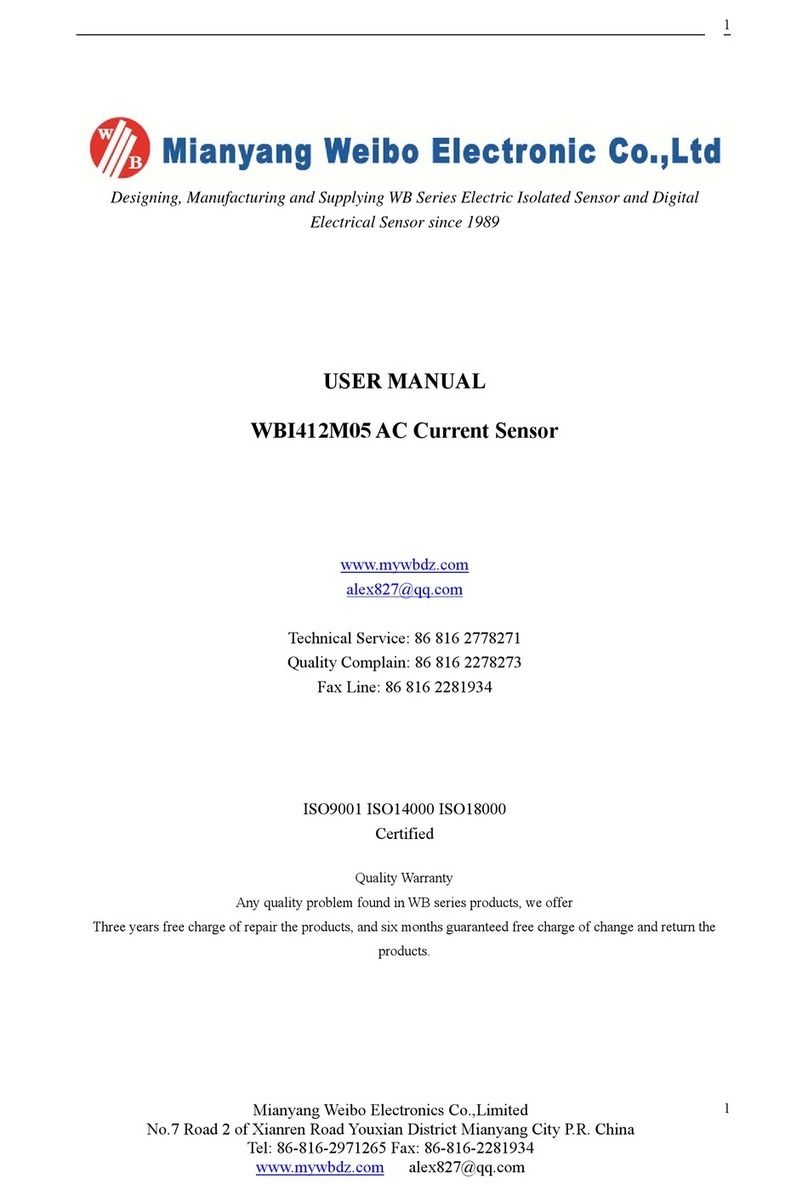ThingMagic Mercury xPRESS Assembly Instructions

A D I V I S I O N O F T R I M B L E
1
875-0072-02 Rev B
Mercury xPRESS Platform Guide
SDK Version 1.7.1

A D I V I S I O N O F T R I M B L E
2
Government Limited Rights Notice: All documentation and manuals were developed at
private expense and no part of it was developed using Government funds.
The U.S. Government’s rights to use, modify, reproduce, release, perform, display, or
disclose the technical data contained herein are restricted by paragraph (b)(3) of the
Rights in Technical Data — Noncommercial Items clause (DFARS 252.227-7013(b)(3)),
as amended from time-to-time. Any reproduction of technical data or portions thereof
marked with this legend must also reproduce the markings. Any person, other than the
U.S. Government, who has been provided access to such data must promptly notify
ThingMagic.
ThingMagic, Mercury, Reads Any Tag, and the ThingMagic logo are trademarks or
registered trademarks of ThingMagic, A Division of Trimble.
Other product names mentioned herein may be trademarks or registered trademarks of
Trimble or other companies.
©2015 ThingMagic – a division of Trimble Navigation Limited. ThingMagic and The
Engine in RFID are registered trademarks of Trimble Navigation Limited. Other marks
may be protected by their respective owners. All Rights Reserved.d
ThingMagic, A Division of Trimble
1 Merrill Street
Woburn, MA 01801
866-833-4069
02 Revision B
June, 2015

A D I V I S I O N O F T R I M B L E
3
Revision Table
Version Date Description
875-0072-01
Rev A
Dec
2013
Initial Release for SDK version 1.5.1
875-0072-02
Rev A
Sept
2014
Added SAM-BA Appendix and changes introduced with revision
1.7.1 of the SDK, plus hardware and software instructions for new
WiFi, POE, and GPS modules
875-0072-02
Rev B
June
2015
The section “Install CDT support packages” added to “Installing
Development Tools on Windows” chapter.

A D I V I S I O N O F T R I M B L E
4

Contents 5
A D I V I S I O N O F T R I M B L E
Contents
Contents . . . . . . . . . . . . . . . . . . . . . . . . . . . . . . . . . . . . . . . . . . . . . . . . . . . . . . . . . . 5
Introduction . . . . . . . . . . . . . . . . . . . . . . . . . . . . . . . . . . . . . . . . . . . . . . . . . . . . . . . 9
Ordering Information . . . . . . . . . . . . . . . . . . . . . . . . . . . . . . . . . . . . . . . . . . . . . . . . . . . . . . . . . . . 10
Regulatory and Safety Compliance . . . . . . . . . . . . . . . . . . . . . . . . . . . . . . . . . . . 11
Authorized Antennas . . . . . . . . . . . . . . . . . . . . . . . . . . . . . . . . . . . . . . . . . . . . . . . . . . . . . . . . . . . 14
Micro and Micro-LTE . . . . . . . . . . . . . . . . . . . . . . . . . . . . . . . . . . . . . . . . . . . . . . . . . . . . . . . . . 14
M6e . . . . . . . . . . . . . . . . . . . . . . . . . . . . . . . . . . . . . . . . . . . . . . . . . . . . . . . . . . . . . . . . . . . . . . 15
ElectroStatic Discharge (ESD) Considerations . . . . . . . . . . . . . . . . . . . . . . . . . . . . . . . . . . . . . . . 15
Common Installation Best Practices. . . . . . . . . . . . . . . . . . . . . . . . . . . . . . . . . . . . . . . . . . . . . . . . 16
Quick Start Guide. . . . . . . . . . . . . . . . . . . . . . . . . . . . . . . . . . . . . . . . . . . . . . . . . . 17
xPRESS Platform Contents . . . . . . . . . . . . . . . . . . . . . . . . . . . . . . . . . . . . . . . . . . . . . . . . . . . . . . . 18
Hardware . . . . . . . . . . . . . . . . . . . . . . . . . . . . . . . . . . . . . . . . . . . . . . . . . . . . . . . . . . . . . . . . . . . . 18
Software . . . . . . . . . . . . . . . . . . . . . . . . . . . . . . . . . . . . . . . . . . . . . . . . . . . . . . . . . . . . . . . . . . . . . 19
Documentation . . . . . . . . . . . . . . . . . . . . . . . . . . . . . . . . . . . . . . . . . . . . . . . . . . . . . . . . . . . . . . . . 20
Hardware Setup . . . . . . . . . . . . . . . . . . . . . . . . . . . . . . . . . . . . . . . . . . . . . . . . . . . . . . . . . . . . . . . . . 21
Using the Sample Application . . . . . . . . . . . . . . . . . . . . . . . . . . . . . . . . . . . . . . . 25
RFID Sensor Application . . . . . . . . . . . . . . . . . . . . . . . . . . . . . . . . . . . . . . . . . . . . . . . . . . . . . . . . . 26
Architecture of the RFID Sensor App . . . . . . . . . . . . . . . . . . . . . . . . . . . . . . . . . . . . . . . . . . . . . . . 26
Demo App Architecture . . . . . . . . . . . . . . . . . . . . . . . . . . . . . . . . . . . . . . . . . . . . . . . . . . . . . . . 26
Demo App Program Flow . . . . . . . . . . . . . . . . . . . . . . . . . . . . . . . . . . . . . . . . . . . . . . . . . . . . . 27
Demo App Program Configuration . . . . . . . . . . . . . . . . . . . . . . . . . . . . . . . . . . . . . . . . . . . . . . 28
RTC: Real Time Clock . . . . . . . . . . . . . . . . . . . . . . . . . . . . . . . . . . . . . . . . . . . . . . . . . . . . . . . . . . 28
xPRESS Console . . . . . . . . . . . . . . . . . . . . . . . . . . . . . . . . . . . . . . . . . . . . . . . . . . . . . . . . . . . . . . . . 30
Connecting to the Console . . . . . . . . . . . . . . . . . . . . . . . . . . . . . . . . . . . . . . . . . . . . . . . . . . . . . . . 30
Console Commands. . . . . . . . . . . . . . . . . . . . . . . . . . . . . . . . . . . . . . . . . . . . . . . . . . . . . . . . . . . . 30

A D I V I S I O N O F T R I M B L E
6Contents
Log and Debug Levels . . . . . . . . . . . . . . . . . . . . . . . . . . . . . . . . . . . . . . . . . . . . . . . . . . . . . . . . . . 33
Run-time Controls . . . . . . . . . . . . . . . . . . . . . . . . . . . . . . . . . . . . . . . . . . . . . . . . . . . . . . . . . . . 33
Using the Optional Modules . . . . . . . . . . . . . . . . . . . . . . . . . . . . . . . . . . . . . . . . . 35
Bluetooth Module . . . . . . . . . . . . . . . . . . . . . . . . . . . . . . . . . . . . . . . . . . . . . . . . . . . . . . . . . . . . . . . 36
Specifications . . . . . . . . . . . . . . . . . . . . . . . . . . . . . . . . . . . . . . . . . . . . . . . . . . . . . . . . . . . . . . . . . 36
Hardware Installation . . . . . . . . . . . . . . . . . . . . . . . . . . . . . . . . . . . . . . . . . . . . . . . . . . . . . . . . . . . 36
Linux Bluetooth Keyboard Setup . . . . . . . . . . . . . . . . . . . . . . . . . . . . . . . . . . . . . . . . . . . . . . . . . . 37
Windows Bluetooth Keyboard Setup . . . . . . . . . . . . . . . . . . . . . . . . . . . . . . . . . . . . . . . . . . . . . . . 41
Android (4.2) Bluetooth Keyboard Setup . . . . . . . . . . . . . . . . . . . . . . . . . . . . . . . . . . . . . . . . . . . . 42
RFID Sensor Demo Instructions. . . . . . . . . . . . . . . . . . . . . . . . . . . . . . . . . . . . . . . . . . . . . . . . . . . 43
RN-42 Initialization . . . . . . . . . . . . . . . . . . . . . . . . . . . . . . . . . . . . . . . . . . . . . . . . . . . . . . . . . . 44
RN-42 Flow Control. . . . . . . . . . . . . . . . . . . . . . . . . . . . . . . . . . . . . . . . . . . . . . . . . . . . . . . . . . 45
RN-42 Connection Status . . . . . . . . . . . . . . . . . . . . . . . . . . . . . . . . . . . . . . . . . . . . . . . . . . . . . 45
WiFi Module . . . . . . . . . . . . . . . . . . . . . . . . . . . . . . . . . . . . . . . . . . . . . . . . . . . . . . . . . . . . . . . . . . . . 46
Features Implemented . . . . . . . . . . . . . . . . . . . . . . . . . . . . . . . . . . . . . . . . . . . . . . . . . . . . . . . . . . 48
Initialization Process. . . . . . . . . . . . . . . . . . . . . . . . . . . . . . . . . . . . . . . . . . . . . . . . . . . . . . . . . . . . 50
Connection Status . . . . . . . . . . . . . . . . . . . . . . . . . . . . . . . . . . . . . . . . . . . . . . . . . . . . . . . . . . . . . 52
Power Management . . . . . . . . . . . . . . . . . . . . . . . . . . . . . . . . . . . . . . . . . . . . . . . . . . . . . . . . . . . . 52
Console Command Control . . . . . . . . . . . . . . . . . . . . . . . . . . . . . . . . . . . . . . . . . . . . . . . . . . . . . . 53
Configuration Settings . . . . . . . . . . . . . . . . . . . . . . . . . . . . . . . . . . . . . . . . . . . . . . . . . . . . . . . . . . 54
Mapping of RN-171 Config. Parameters to xPRESS Names. . . . . . . . . . . . . . . . . . . . . . . . . . . . . 55
Known Limitations . . . . . . . . . . . . . . . . . . . . . . . . . . . . . . . . . . . . . . . . . . . . . . . . . . . . . . . . . . . . . 59
Known Issues . . . . . . . . . . . . . . . . . . . . . . . . . . . . . . . . . . . . . . . . . . . . . . . . . . . . . . . . . . . . . . . . . 59
Power-Over-Ethernet Module . . . . . . . . . . . . . . . . . . . . . . . . . . . . . . . . . . . . . . . . . . . . . . . . . . . . . . 60
Installation . . . . . . . . . . . . . . . . . . . . . . . . . . . . . . . . . . . . . . . . . . . . . . . . . . . . . . . . . . . . . . . . . . . 60
Power over Ethernet. . . . . . . . . . . . . . . . . . . . . . . . . . . . . . . . . . . . . . . . . . . . . . . . . . . . . . . . . . . . 62
Configuration . . . . . . . . . . . . . . . . . . . . . . . . . . . . . . . . . . . . . . . . . . . . . . . . . . . . . . . . . . . . . . . . . 62
Initialization Process. . . . . . . . . . . . . . . . . . . . . . . . . . . . . . . . . . . . . . . . . . . . . . . . . . . . . . . . . . . . 64
Flow Control . . . . . . . . . . . . . . . . . . . . . . . . . . . . . . . . . . . . . . . . . . . . . . . . . . . . . . . . . . . . . . . 65
Connection Status . . . . . . . . . . . . . . . . . . . . . . . . . . . . . . . . . . . . . . . . . . . . . . . . . . . . . . . . . . . 65
Known Limitations . . . . . . . . . . . . . . . . . . . . . . . . . . . . . . . . . . . . . . . . . . . . . . . . . . . . . . . . . . . . . 65
GPS Module . . . . . . . . . . . . . . . . . . . . . . . . . . . . . . . . . . . . . . . . . . . . . . . . . . . . . . . . . . . . . . . . . . . . 66
Configuration . . . . . . . . . . . . . . . . . . . . . . . . . . . . . . . . . . . . . . . . . . . . . . . . . . . . . . . . . . . . . . . . . 67
GPS Metadata . . . . . . . . . . . . . . . . . . . . . . . . . . . . . . . . . . . . . . . . . . . . . . . . . . . . . . . . . . . . . . . . 67
Status Indication Through GPI Lines . . . . . . . . . . . . . . . . . . . . . . . . . . . . . . . . . . . . . . . . . . . . . . . 69
Installing Developer Tools on Windows OS . . . . . . . . . . . . . . . . . . . . . . . . . . . . 71
Installing GNU Tools for ARM Embedded Processors. . . . . . . . . . . . . . . . . . . . . . . . . . . . . . . . . . 71
Install Java . . . . . . . . . . . . . . . . . . . . . . . . . . . . . . . . . . . . . . . . . . . . . . . . . . . . . . . . . . . . . . . . . . . 72

A D I V I S I O N O F T R I M B L E
Contents 7
Install Eclipse IDE for C/C++ Developers. . . . . . . . . . . . . . . . . . . . . . . . . . . . . . . . . . . . . . . . . . . . 74
Install CDT support packages . . . . . . . . . . . . . . . . . . . . . . . . . . . . . . . . . . . . . . . . . . . . . . . . . . . . 76
Install USB Driver . . . . . . . . . . . . . . . . . . . . . . . . . . . . . . . . . . . . . . . . . . . . . . . . . . . . . . . . . . . . . . 78
Next Steps . . . . . . . . . . . . . . . . . . . . . . . . . . . . . . . . . . . . . . . . . . . . . . . . . . . . . . . . . . . . . . . . . . . 78
Installing Developer Tools on LINUX OS. . . . . . . . . . . . . . . . . . . . . . . . . . . . . . . 79
Install GNU Tools for ARM Embedded Processors . . . . . . . . . . . . . . . . . . . . . . . . . . . . . . . . . . . . 79
Installing Java Runtime . . . . . . . . . . . . . . . . . . . . . . . . . . . . . . . . . . . . . . . . . . . . . . . . . . . . . . . . . 81
Install Eclipse IDE for C/C++ Developers. . . . . . . . . . . . . . . . . . . . . . . . . . . . . . . . . . . . . . . . . . . . 81
Next Steps . . . . . . . . . . . . . . . . . . . . . . . . . . . . . . . . . . . . . . . . . . . . . . . . . . . . . . . . . . . . . . . . . . . 83
Using the Developer Toolkit . . . . . . . . . . . . . . . . . . . . . . . . . . . . . . . . . . . . . . . . . 85
Importing Project Files . . . . . . . . . . . . . . . . . . . . . . . . . . . . . . . . . . . . . . . . . . . . . . . . . . . . . . . . . . 85
Build Tool Adjustments . . . . . . . . . . . . . . . . . . . . . . . . . . . . . . . . . . . . . . . . . . . . . . . . . . . . . . . 89
Project Building . . . . . . . . . . . . . . . . . . . . . . . . . . . . . . . . . . . . . . . . . . . . . . . . . . . . . . . . . . . . . . . 89
Common Build Errors . . . . . . . . . . . . . . . . . . . . . . . . . . . . . . . . . . . . . . . . . . . . . . . . . . . . . . . . . . . 90
Common Error1. . . . . . . . . . . . . . . . . . . . . . . . . . . . . . . . . . . . . . . . . . . . . . . . . . . . . . . . . . . . . 90
Common Error 2 . . . . . . . . . . . . . . . . . . . . . . . . . . . . . . . . . . . . . . . . . . . . . . . . . . . . . . . . . . . . 91
Installing JTAG ICE and J-LINK GDB Server. . . . . . . . . . . . . . . . . . . . . . . . . . . . . . . . . . . . . . . . . 91
Obtaining a JTAG ICE. . . . . . . . . . . . . . . . . . . . . . . . . . . . . . . . . . . . . . . . . . . . . . . . . . . . . . . . 91
JTAG Hardware Installation . . . . . . . . . . . . . . . . . . . . . . . . . . . . . . . . . . . . . . . . . . . . . . . . . . . 92
Linux JLINK Software Installation (JLinkGDBServer) . . . . . . . . . . . . . . . . . . . . . . . . . . . . . . . . 92
Windows JLINK Software Installation (JLinkGDBServer) . . . . . . . . . . . . . . . . . . . . . . . . . . . . . 95
Preparing the xPRESS motherboard . . . . . . . . . . . . . . . . . . . . . . . . . . . . . . . . . . . . . . . . . . . . . . . 98
Running the Debugger . . . . . . . . . . . . . . . . . . . . . . . . . . . . . . . . . . . . . . . . . . . . . . . . . . . . . . . . . . 99
Running the Program . . . . . . . . . . . . . . . . . . . . . . . . . . . . . . . . . . . . . . . . . . . . . . . . . . . . . . . . . . 104
Relaunching the Program. . . . . . . . . . . . . . . . . . . . . . . . . . . . . . . . . . . . . . . . . . . . . . . . . . . . . . . 104
Disconnecting the Console. . . . . . . . . . . . . . . . . . . . . . . . . . . . . . . . . . . . . . . . . . . . . . . . . . . . . . 105
Hardware Reference Guide. . . . . . . . . . . . . . . . . . . . . . . . . . . . . . . . . . . . . . . . . 107
Description of Functional Blocks . . . . . . . . . . . . . . . . . . . . . . . . . . . . . . . . . . . . . . . . . . . . . . . . . 108
Processor (MCU). . . . . . . . . . . . . . . . . . . . . . . . . . . . . . . . . . . . . . . . . . . . . . . . . . . . . . . . . . . 108
RFID Module . . . . . . . . . . . . . . . . . . . . . . . . . . . . . . . . . . . . . . . . . . . . . . . . . . . . . . . . . . . . . . 109
Battery Charging Controller. . . . . . . . . . . . . . . . . . . . . . . . . . . . . . . . . . . . . . . . . . . . . . . . . . . 110
Interfaces, Indicators and Controls. . . . . . . . . . . . . . . . . . . . . . . . . . . . . . . . . . . . . . . . . . . . . . . . 111
AC Adapter Input. . . . . . . . . . . . . . . . . . . . . . . . . . . . . . . . . . . . . . . . . . . . . . . . . . . . . . . . . . . 111
Battery, “Loop” and Comm Bus Power Inputs. . . . . . . . . . . . . . . . . . . . . . . . . . . . . . . . . . . . . 111
System controls and indicators . . . . . . . . . . . . . . . . . . . . . . . . . . . . . . . . . . . . . . . . . . . . . . . . 112
OTG USB Interface . . . . . . . . . . . . . . . . . . . . . . . . . . . . . . . . . . . . . . . . . . . . . . . . . . . . . . . . . 114
Debug USB Port . . . . . . . . . . . . . . . . . . . . . . . . . . . . . . . . . . . . . . . . . . . . . . . . . . . . . . . . . . . 116
Module USB Interface . . . . . . . . . . . . . . . . . . . . . . . . . . . . . . . . . . . . . . . . . . . . . . . . . . . . . . . 116

A D I V I S I O N O F T R I M B L E
8Contents
Programmable LEDs and Switch . . . . . . . . . . . . . . . . . . . . . . . . . . . . . . . . . . . . . . . . . . . . . . 117
Buzzer . . . . . . . . . . . . . . . . . . . . . . . . . . . . . . . . . . . . . . . . . . . . . . . . . . . . . . . . . . . . . . . . . . . 117
“Coin” battery. . . . . . . . . . . . . . . . . . . . . . . . . . . . . . . . . . . . . . . . . . . . . . . . . . . . . . . . . . . . . . 117
xBee Interface . . . . . . . . . . . . . . . . . . . . . . . . . . . . . . . . . . . . . . . . . . . . . . . . . . . . . . . . . . . . . 118
Communications Interface Bus Connector . . . . . . . . . . . . . . . . . . . . . . . . . . . . . . . . . . . . . . . 119
Test Interface . . . . . . . . . . . . . . . . . . . . . . . . . . . . . . . . . . . . . . . . . . . . . . . . . . . . . . . . . . . . . 120
JTAG Interface . . . . . . . . . . . . . . . . . . . . . . . . . . . . . . . . . . . . . . . . . . . . . . . . . . . . . . . . . . . . 121
Power Source Precedence. . . . . . . . . . . . . . . . . . . . . . . . . . . . . . . . . . . . . . . . . . . . . . . . . . . . . . 121
AC Input Adapter. . . . . . . . . . . . . . . . . . . . . . . . . . . . . . . . . . . . . . . . . . . . . . . . . . . . . . . . . . . 122
USB Connection . . . . . . . . . . . . . . . . . . . . . . . . . . . . . . . . . . . . . . . . . . . . . . . . . . . . . . . . . . . 123
Li-ion Battery . . . . . . . . . . . . . . . . . . . . . . . . . . . . . . . . . . . . . . . . . . . . . . . . . . . . . . . . . . . . . . 124
Comm Bus (“POE”) Power . . . . . . . . . . . . . . . . . . . . . . . . . . . . . . . . . . . . . . . . . . . . . . . . . . . 124
Known HW Limitations . . . . . . . . . . . . . . . . . . . . . . . . . . . . . . . . . . . . . . . . . . . . . . . . . . . . . . . . . 125
Known Issues . . . . . . . . . . . . . . . . . . . . . . . . . . . . . . . . . . . . . . . . . . . . . . . . . . . . . . . . . . . . . . . . 125
Software Reference Guide . . . . . . . . . . . . . . . . . . . . . . . . . . . . . . . . . . . . . . . . . 127
SW Block diagram . . . . . . . . . . . . . . . . . . . . . . . . . . . . . . . . . . . . . . . . . . . . . . . . . . . . . . . . . . . . 127
Toolchain . . . . . . . . . . . . . . . . . . . . . . . . . . . . . . . . . . . . . . . . . . . . . . . . . . . . . . . . . . . . . . . . . . . 128
Toolchain Downloads . . . . . . . . . . . . . . . . . . . . . . . . . . . . . . . . . . . . . . . . . . . . . . . . . . . . . . . . . . 128
Toolchain Build Instructions . . . . . . . . . . . . . . . . . . . . . . . . . . . . . . . . . . . . . . . . . . . . . . . . . . . . . 129
JLink GDB . . . . . . . . . . . . . . . . . . . . . . . . . . . . . . . . . . . . . . . . . . . . . . . . . . . . . . . . . . . . . . . . . . 129
Eclipse . . . . . . . . . . . . . . . . . . . . . . . . . . . . . . . . . . . . . . . . . . . . . . . . . . . . . . . . . . . . . . . . . . . . . 129
ASF . . . . . . . . . . . . . . . . . . . . . . . . . . . . . . . . . . . . . . . . . . . . . . . . . . . . . . . . . . . . . . . . . . . . . . . 130
SDK . . . . . . . . . . . . . . . . . . . . . . . . . . . . . . . . . . . . . . . . . . . . . . . . . . . . . . . . . . . . . . . . . . . . . . . 130
Appendix A: SAM-BA for Windows 131
Preparing the xPRESS motherboard . . . . . . . . . . . . . . . . . . . . . . . . . . . . . . . . . . . . . . . . . . . . . . . 132
Installing SAM-BA Software . . . . . . . . . . . . . . . . . . . . . . . . . . . . . . . . . . . . . . . . . . . . . . . . . . . . . . 134
Installing the Windows USB Driver . . . . . . . . . . . . . . . . . . . . . . . . . . . . . . . . . . . . . . . . . . . . . . . . 137
Setting Up SAM-BA to work with xPRESS . . . . . . . . . . . . . . . . . . . . . . . . . . . . . . . . . . . . . . . . . . 141
Using SAM-BA . . . . . . . . . . . . . . . . . . . . . . . . . . . . . . . . . . . . . . . . . . . . . . . . . . . . . . . . . . . . . . . . . 142

A D I V I S I O N O F T R I M B L E
Introduction 9
Introduction
The Mercury xPRESS RFID Solution Development Platform is a microcontroller-based
hardware and software platform designed to enable rapid development of custom finished
UHF RFID readers using the ThingMagic Mercury6e-Series modules (M6e, Micro, and
Micro-LTE). The xPRESS Platform is designed to support multiple interfaces for use
across a wide range of applications via support for option modules.
Note
The Micro and Micro-LTE RFID modules are identical except for read rate
performance, so all information given for the “Micro” applies to both products.
This document is broken down into the following chapters:
Regulatory and Safety Compliance - Regulatory and safety information that must be
followed if using the xPRESS platform outside of a development environment.
Includes advice for best practices to avoid Electrostatic Discharge (ESD) damage.
Quick Start Guide - This chapter instructs the user how to connect the xPRESS
motherboard to a host PC and run the pre-installed RFID Sensor application.
Using the Optional Modules - This chapter provides details about installing and
operating the optional modules, including Bluetooth, WiFi, Power-Over-Ethernet
(POE) and GPS.
Installing Developer Tools on Windows OS - This chapter provides detailed instructions
for installing 3rd-party development tools and the ThingMagic SDK on a Windows PC
in order to develop or modify ThingMagic applications (including the RFID Sensor
sample application).
Installing Developer Tools on LINUX OS - This chapter provides detailed instructions for
installing 3rd-party development tools and the ThingMagic SDK on a LINUX PC in
order to develop or modify ThingMagic applications (including the RFID Sensor
sample application).
Using the Developer Toolkit - This chapter explains how to build and download an
application on both Windows and LINUX PC hosts.
Using the Sample Application - This chapter provides information on the sample
applications included with the development platform (initially only the RFID Sensor)
for programmers who would like to modify it.
Hardware Reference Guide - This chapter provides detailed information about the
xPRESS platform hardware architecture, controls, indicators, and interfaces.
Software Reference Guide - This chapter provides detailed information about the
xPRESS platform software architecture and the development tools used to create
applications for the platform.

A D I V I S I O N O F T R I M B L E
10 Introduction
Appendix A: SAM-BA for Windows - This chapter provides instructions for creating an
application “bin” file that can be downloaded to the xPRESS platform via the USB
port directly from a PC.
Ordering Information
The available xPRESS platform models and accessories are listed in the following table.
ThingMagic also offers RFID antennas and tags that are compatible with this platform.
See www.thingmagic.com for additional information.
Product Description Part Number
xPRESS Development Platform with
M6e RFID Module
XP6e
xPRESS Development Platform with
Micro RFID Module
XP6e-M
xPRESS Development Platform with
Micro-LTE RFID module
XP6e-Micro
Optional Bluetooth Interface Module XP-BT
Optional Power-Over-Ethernet Module XP-PoE
Optional WiFi Module with integrated
antenna
XP-Wi-Fi
Optional GPS module with antenna XP-GPS

A D I V I S I O N O F T R I M B L E
Regulatory and Safety Compliance 11
Regulatory and Safety Compliance
C A U T I O N !
!!
The xPRESS platform has been tested for regulatory compliance in order
to validate its design, but further testing and certification is required
before the xPRESS platform can be deployed as an RFID reader in an
application environment.
Note
Detailed information regarding the compliance of the modules and the
installation requirements necessary to insure compliance when the
reader is deployed is found in the user guide for each module:
M6e Hardware Guide (Current version: November 2013)
Micro Hardware Guide (Current version: March 2014)
In order to be approved for deployment, an RFID reader based on the xPRESS platform
must pass several categories of certification:
1. Certification as an “intentional radiator”. This category includes the following sub-
categories of requirements:
Correct in-band characteristics to make it compatible with other transmitters that
share the same frequency band
Adequate suppression of radiated signals outside the frequency band of operation
so as to not interfere with services in adjacent frequency bands
Statement detailing the distance from the antenna that must be maintained to
insure that RF levels are below recommended safe levels.
2. Certification as an “unintentional radiator” when the RFID reader is not actively
transmitting.
3. Safety compliance to protect installers and operators
Each country establishes its own regulatory and safety requirements for transmitters such
as RFID readers. Often these requirements are strongly based on those established by
FCC or EU standards bodies, as they were published or with minor changes. Both the

A D I V I S I O N O F T R I M B L E
12 Regulatory and Safety Compliance
M6e and Micro modules (including the Micro-LTE) conform to requirements for most
countries. Refer to the module User Guides for a list of which regions are supported.
FCC certification is required for operation in the US. Many other countries have adopted
FCC requirements as their own. Other countries have adopted all requirements but the
frequency band of operation. These countries require that the reader operate in a subset
of the FCC band (902 to 928 MHz) in order to avoid interfering with existing RF services
that were previously assigned to a portion of the FCC band. ThingMagic modules
accomplish this by allowing a custom “hop table” to be defined after FCC regional settings
are applied.
With respect to requirements for intentional radiation, the FCC will certify the RFID
module to be compliant as a component of a product and that certification covers any
product that contains the module. ThingMagic has obtained modular certification for our
M6e and Micro modules. The FCC ID’s for the modules in the xPRESS platform are:.
Micro and Micro-LTE: QV5MERCURY6E-M
M6e: QV5MERCURY6E
Bluetooth Module: T9J-RN42
WiFi Module: T9JRN171-1
Your product will be required to be labeled with a statement of compliance that refers to
these ID numbers if you are using our modular certification.
Included in the filing to the FCC is a calculation that shows the distance from the antenna
that should be maintained to keep RF levels at or below FCC-recommended safe
exposure limits. For UHF RFID, this is around 23 cm (9 inches), at the maximum
permissible transmission level when using antennas with the highest allowed gain. We
submit this calculation for the RF module alone when we obtain approval for the module.
This calculation may have to be amended if other intentional radiators, such as a
Bluetooth module, are present as well. The calculation depends on the separation
between the RFID antenna(s) and other simultaneously radiating antennas, so can only
be done once a finished product is created from the xPRESS platform.
The FCC does not allow vendors to pre-certify modules or platforms such as xPRESS for
unintentional radiation, but we have pre-tested the xPRESS platform to give our
customers confidence that any readers based on the xPRESS design will have a very
high probability of obtaining certification.
The Industry Canada (Industrie Canada) has the same technical requirements as FCC,
and allows modular certification, but has their own filing and labeling requirements. One
significant deviation from FCC is that all products containing the modules must be
declared to the IC, whereas FCC only requires that the modules FCC ID be on the outside

A D I V I S I O N O F T R I M B L E
Regulatory and Safety Compliance 13
label of the product (which IC requires for their ID as well). The Industry Canada product
ID’s for the xPRESS modules are:
Micro and Micro-LTE: 5407A-MERCURY6EM
M6e: 5407-QV5MERCURY6E
Bluetooth Module: 6514A-RN42
WiFi Module: 6514A-RN171
EU has their own set of regulatory requirements for RFID equipment, created by ETSI.
ETSI requirements have been adopted by many countries and several others have
adopted their RF requirements with a slightly different band of operation. The EU band is
roughly in the range of 865 to 868 MHz, which is well below the FCC range.
Unlike FCC, EU requires self-certification rather than submitting a reader (or module) for
approval to a certified test house. The self-certification consists of a test report (which is
usually from a 3rd-party test facility) and a letter certifying compliance, signed by an
officer of the company. ThingMagic customers can use the ThingMagic module test
results as the test results they supply to their customers, but they must supply their own
certificate of compliance sighed by one of their officers. As ETSI augments and amends
their requirements, they continue to allow use of equipment that conforms to older
requirements for a period of time. The standard that covers UHF RFID is document
number “EN 302 208” and the current version is 1.4.1.
The optional modules are certified to the following ETSI standards;
Bluetooth Module: EN 300 328: v1.8.1
WiFi Module: EN 300 328: v1.8.1
Although both the M6e and Micro support both the FCC and EU regions in a single SKU,
this does not necessarily mean that a single product can be created which can be
operated in both these (and other) regions. Two factors limit the ability to create a single
world-wide model:
1. Conflicting labeling requirements among various regions which cannot be resolved
by including all information on a single label.
2. FCC’s insistence on a “BIOS-level” lock-out for altering the RF characteristics of a
transmitter in a way that would violate FCC requirements. This means that the EU
region of operation, for example, cannot be selected via a simple configuration menu
option along with the other RF characteristics, even if the hardware supports it.
Safety certification to protect people installing, using, and maintaining the product is
governed by Underwriters Laboratory (UL) in the US and CE in Europe. When
ThingMagic certifies a reader for safety, we have the reader tested against the “CB”
requirements, which is a super-set of other requirements and is accepted by most
countries as proof of conformance (although they often require that certification be

A D I V I S I O N O F T R I M B L E
14 Regulatory and Safety Compliance
applied for, with “CB” test results included in the paperwork that is submitted for
approval).
Authorized Antennas
FCC and IC modular certification requires that the vendor submit a list of antennas which
have been tested for compliance with the module. Antennas of the same type as a
compliant antenna, but having lower gain, are permitted to be used in place of approved
antennas. The following table provides information about the antennas that ThingMagic
has successfully submitted for approval when modular certification was obtained.
Micro and Micro-LTE
*For circularly polarized antennas, the maximum linear gain is the maximum gain as
measured with a calibrated linear dipole antenna, facing the C.P. antenna at any
rotational angle. The published circular polarized gain can be as much as 3 dB higher
than the maximum linear gain.
Vendor Model Type Polarization
Maximum
Linear Gain
(dBi)*
ThingMagic
(Laird)
ANT-NA-9025
(S9025P)
Patch Circular 4.3
ThingMagic
(Laird)
ANT-NA-A5
(S8658WPL)
Patch Circular 6.0
ThingMagic (MTI
WIreless)
ANT-NB-7-2031
(MT-262031)
Patch Circular 6.0
ThingMagic (MTI
Wireless)
ANT-WB-12-
2043 (MT-
242043)
Patch Circular 6.0
ThingMagic (MTI
Wireless)
ANT-WB-6-2025
(MT-242025)
Patch Circular 6.0
Laird FG9026 Dipole Linear 6.0

A D I V I S I O N O F T R I M B L E
Regulatory and Safety Compliance 15
M6e
*For circularly polarized antennas, the maximum linear gain is the maximum gain as
measured with a calibrated linear dipole antenna, facing the C.P. antenna at any
rotational angle. The published circular polarized gain can be as much as 3 dB higher
than the maximum linear gain.
ElectroStatic Discharge (ESD) Considerations
W A R N I N G !
The M6e and Micro antenna ports may be susceptible to damage from
Electrostatic Discharge (ESD). Equipment failure can result if the antenna or
communication ports are subjected to ESD. Standard ESD precautions should
be taken during installation to avoid static discharge when handling or making
connections to the reader antenna or communication ports. Environmental
analysis should also be performed to ensure static is not building up on and
around the antennas, possibly causing discharges during operation. See the User
Guides for the modules for additional information on protecting readers from
ESD.
Vendor Model Type Polarization
Maximum
Linear Gain
(dBi)*
ThingMagic
(Laird)
ANT-NA-9025
(S9025P)
Patch Circular 4.3
ThingMagic
(Laird)
ANT-NA-A5
(S8658WPL)
Patch Circular 6.0
ThingMagic (MTI
WIreless)
ANT-NB-7-2031
(MT-262031)
Patch Circular 6.0
ThingMagic (MTI
Wireless)
ANT-WB-12-
2043 (MT-
242043)
Patch Circular 6.0
ThingMagic (MTI
Wireless)
ANT-WB-6-2025
(MT-242025)
Patch Circular 6.0

A D I V I S I O N O F T R I M B L E
16 Regulatory and Safety Compliance
Common Installation Best Practices
The following are common installation best practices which will ensure the readers isn’t
being unnecessarily exposed to ESD in even low risk environments. These should be
applied to all installations, full power or partial power, ESD or not:
Select an antenna with all radiating elements grounded for DC. The MTI MT-
262031-T(L,R)H-A is such an antenna. The Laird IF900-SF00 and CAF95956 are not
such antennas. The grounding of the antenna elements dissipates static charge
leakage, and provides a high pass characteristic that attenuates discharge events.
Verify R-TNC knurled threaded nuts are tight and stay tight. Don’t use a thread
locking compound that would compromise the grounding connection of the thread to
thread mate. If there is any indication that field vibration might cause the R-TNC to
loosen, apply RTV or other adhesive externally.
Use antenna cables with double shield outer conductors, or even full metallic
shield semirigid cables. ThingMagic specified cables are double shielded and
adequate for most applications. ESD discharge currents flowing ostensibly on the
outer surface of a single shield coaxial cable have been seen to couple to the inside
of coaxial cables, causing ESD failure. Avoid RG-58. Prefer RG-223.
Minimize ground loops in coaxial cable runs to antennas. Having the M6e/Micro
and antenna both tied to ground leads to the possibility of ground currents flowing
along antenna cables. The tendency of these currents to flow is related to the area of
the conceptual surface marked out by the antenna cable and the nearest continuous
ground surface. When this conceptual surface has minimum area, these ground loop
currents are minimized. Routing antenna cables against grounded metallic chassis
parts helps minimize ground loop currents.
Keep the antenna radome (non-metallic cover) in place. It provides significant
ESD protection for the metallic parts of the antenna, and protects the antenna from
performance changes due to environmental accumulation.
Keep careful track of serial numbers, operating life times, and numbers of units
operating. You need this information to know what your mean operating life-time is.
Only with this number will you be able to know if you have a systemic failure problem,
ESD or otherwise. After any given change, you will be able to determine whether
things have improved and whether the failures are confined to one area, or
distributed across your population.

A D I V I S I O N O F T R I M B L E
Quick Start Guide 17
Quick Start Guide
This chapter provides a brief introduction to xPRESS with instructions to install, setup and
test the basic, default functionality of the xPRESS Platform.

xPRESS Platform Contents
A D I V I S I O N O F T R I M B L E
18 Quick Start Guide
xPRESS Platform Contents
The xPRESS development platform is shipped as an open system allowing maximum
flexibility in changing hardware configuration and peripherals. This chapter explains how
to assemble the development platform and operate the RFID Sensor demo program over
the USB interface. Once successful, you may want to run this application over one of the
optional module interfaces and add GPS location sensing. If so, consult the Using the
Optional Modules section. Use caution when configuring the hardware.
Note
Always turn off the power and unplug the power cord before changing
hardware configuration and peripherals.
Hardware
Processor Motherboard with one module (either M6e, Micro, or Micro-LTE)
AC Power Adapter with international adapter plugs
Two USB cables
Antenna cable which converts MMCX to Reverse-TNC
The xPRESS Development Platform comes with an AC power adapter, two USB cables,
one antenna cable, and one of the UHF RFID modules shown in the picture. The red

xPRESS Platform Contents
A D I V I S I O N O F T R I M B L E
Quick Start Guide 19
Bluetooth module shown in the picture is optional. Here are all the optional interface and
sensor modules.
Additional components available from ThingMagic include:
Antennas
Reverse-TNC to Reverse-TNC cable
The xPRESS platform supports a coin-cell battery (to power a Real Time Clock) and
rechargeable Li-ION batteries, but these items are not currently available from
ThingMagic.
Software
All software is available to download from the ThingMagic Support site:
http://www.thingmagic.com/manuals-firmware
The xPRESS platform is shipped with a demonstration application pre-installed. This
application allows you to read RFID tags, optionally add GPS information to the data
received, and output the information via any of the supported interfaces. USB and
Bluetooth are supported without any modification to the application code. To use any
other optional modules, the xPRESS SDK will need to be imported into an Eclipse
development environment, minor changes made to the configurable values, the
application program recompiled (“built”), and the resulting binary file downloaded to the
xPRESS processor. Later, you may wish to make other changes to customize the
program’s behavior to better address your application requirements.

xPRESS Platform Contents
A D I V I S I O N O F T R I M B L E
20 Quick Start Guide
Documentation
All documentation is available to download from the ThingMagic support site using this
URL:
http://www.thingmagic.com/manuals-firmware
This site also offers hardware design documentation that will allow you to develop your
own processor board based on the xPRESS platform design: This documentation
includes:
Schematics
Layout files
Gerber files
Bill of Materials
Component Data Sheets
Table of contents
Popular Accessories manuals by other brands
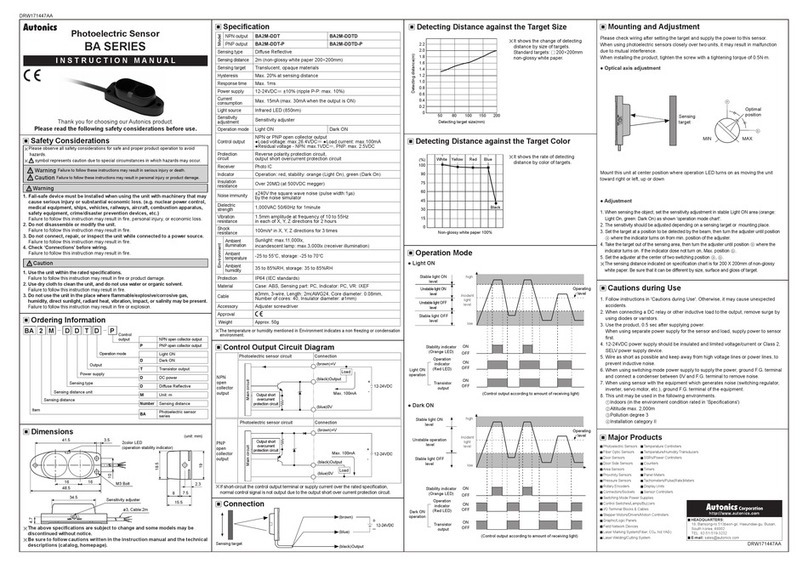
Autonics
Autonics BA Series instruction manual

Safety Technology International
Safety Technology International STI-3360 quick start guide
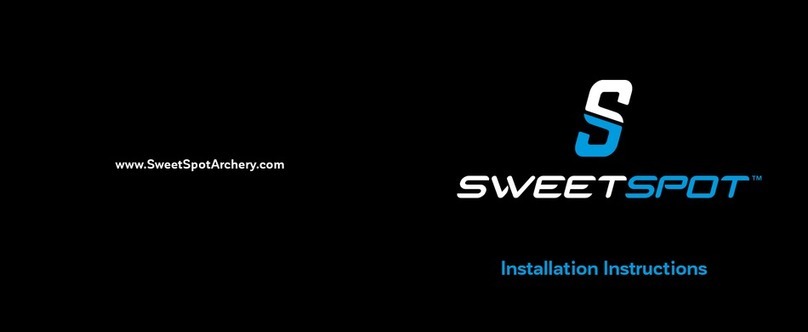
Pressure Perfect Products
Pressure Perfect Products SweepSpot PRO installation instructions
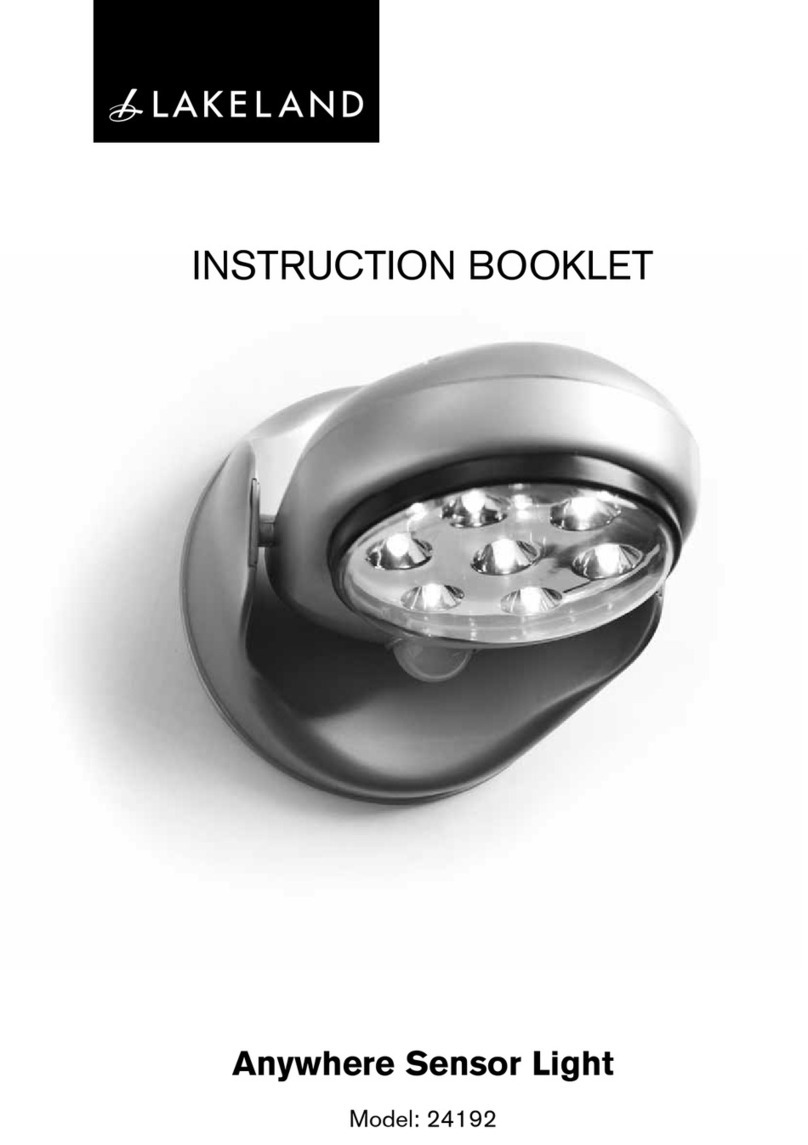
Lakeland
Lakeland 24192 Instruction booklet
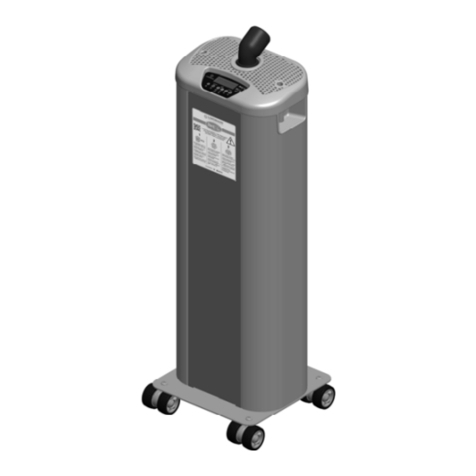
Lindhaus
Lindhaus SterilAir 30 85 27 Original instruction manual

Middle Atlantic Products
Middle Atlantic Products COMP-COOL Quiet-Cool Series instruction sheet
